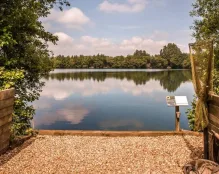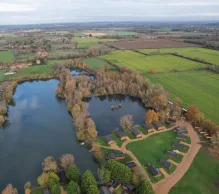The Art of Carp Fishing: Mastering Techniques, Tactics, and Seasonal Strategies
Carp fishing has evolved into a sophisticated sport with a dedicated following, driven by a passion for outsmarting one of the most challenging freshwater fish. As one of the most talked-about topics in the angling community, mastering carp fishing involves understanding seasonal behaviors, choosing the right gear, and employing effective techniques. This comprehensive guide will delve into these areas, offering insights to help both novice and experienced anglers enhance their carp fishing success.
Understanding Carp Behavior and Habitat
Carp are known for their wariness and intelligence, often requiring anglers to adopt a strategic approach. They thrive in a variety of environments, including lakes, rivers, and canals, often favoring areas with ample cover such as lily pads, fallen trees, and weed beds. Understanding their habitat preferences is crucial for locating and targeting them effectively.
Seasonal Behavior
- Spring: As water temperatures rise, carp become more active, moving into shallow bays and lagoons to feed after the winter. Early spring sees mid-afternoon activity, shifting to early morning and late afternoon as the season progresses.
- Summer: Carp are most active at night due to warmer water temperatures, but they can also be caught during the early morning and late evening. Surface fishing with floating baits can be particularly effective during the hottest parts of the day.
- Autumn: Early autumn carp fishing is best in the early morning and late afternoon, with midday becoming more productive as temperatures drop. Carp begin to move to deeper waters as winter approaches, making midday fishing in these areas more effective.
- Winter: Carp activity slows but does not stop. Midday is typically the best time to fish, focusing on deep pockets or areas where the water is slightly warmer.
Essential Carp Fishing Gear
Choosing the right gear can significantly impact your success. Here are the key components:
- Rods: Carp fishing rods are generally 12-13 feet long, providing the leverage needed to cast long distances and control large fish. A test curve of 2.75-3.5 pounds is typical for most carp fishing scenarios. Fox International
- Reels: A reel with a large line capacity and a reliable drag system is essential. Baitrunner reels, which allow carp to take the bait and run without feeling resistance, are popular choices. Fox International
- Line: Monofilament or braided line with a breaking strain of 12-20 pounds is suitable, depending on the size of carp targeted and the fishing environment. Fox International
- Rigs: Various rigs such as the hair rig, chod rig, and zig rig are used to present baits effectively. Each rig serves a different purpose, from bottom fishing to mid-water and surface presentations. Fox International
- Bait: Boilies, particles, and pellets are common carp baits. Flavour and size can vary based on the season and the specific preferences of the carp in your fishing area. CC Moore
Techniques and Tactics
- Surface Fishing: Using floating baits like bread or dog biscuits can be highly effective, especially in summer. This method requires patience and stealth, as carp are easily spooked when feeding on the surface.
- Bottom Fishing: Most carp anglers use bottom fishing techniques, employing rigs that present the bait just above the lake bed. The hair rig is particularly popular, allowing the bait to be placed outside the hook for better hook-ups.
- Spodding and Spombing: These techniques involve using a spod or spomb to accurately deliver bait to a specific area, creating a feeding spot to attract carp. This is often combined with fishing over a bed of particles or boilies to keep carp in the area longer.
- Stalking: This involves quietly moving around the lake margins, visually locating carp and presenting a bait directly to them. This method can be particularly effective in clear, shallow water where carp are visible.
Some of the Best Carp Fishing Destinations in the UK
The UK boasts numerous carp fishing destinations catering to all levels of anglers:
- Woodlakes Park, Norfolk: Known for its five lakes and comfortable lodges, Woodlakes Park is ideal for a relaxing fishing holiday. Carp up to 40 pounds can be caught here.
- Nuddock Wood Lake, Lincolnshire: This secluded venue offers luxury lodges and a deep, clear lake home to carp over 44 pounds. It’s perfect for experienced anglers seeking a challenge.
- Anglers Paradise, Devon: A popular family-friendly destination with over 30 lakes. The Main Carp Lake and Specimen Carp Lake offer opportunities to catch carp over 50 pounds.
Advanced Tips for Successful Carp Fishing
- Bait Preparation: Pre-soaking and flavoring baits can increase their attractiveness. Experimenting with different flavors and textures can help find what works best in your local waters.
- Watercraft: Understanding the underwater environment is crucial. Use a depth finder to locate features like drop-offs, gravel bars, and weed beds where carp are likely to feed.
- Patience and Persistence: Carp fishing often requires long sessions and the ability to adapt to changing conditions. Being observant and willing to change tactics can make a significant difference.
Conclusion
Carp fishing is a rewarding pursuit that combines skill, strategy, and a deep understanding of fish behavior. By mastering the basics, choosing the right gear, and employing effective techniques, anglers can increase their chances of landing these elusive fish. Whether you're fishing in a local pond or a renowned carp lake, the thrill of catching a big carp is unmatched.







